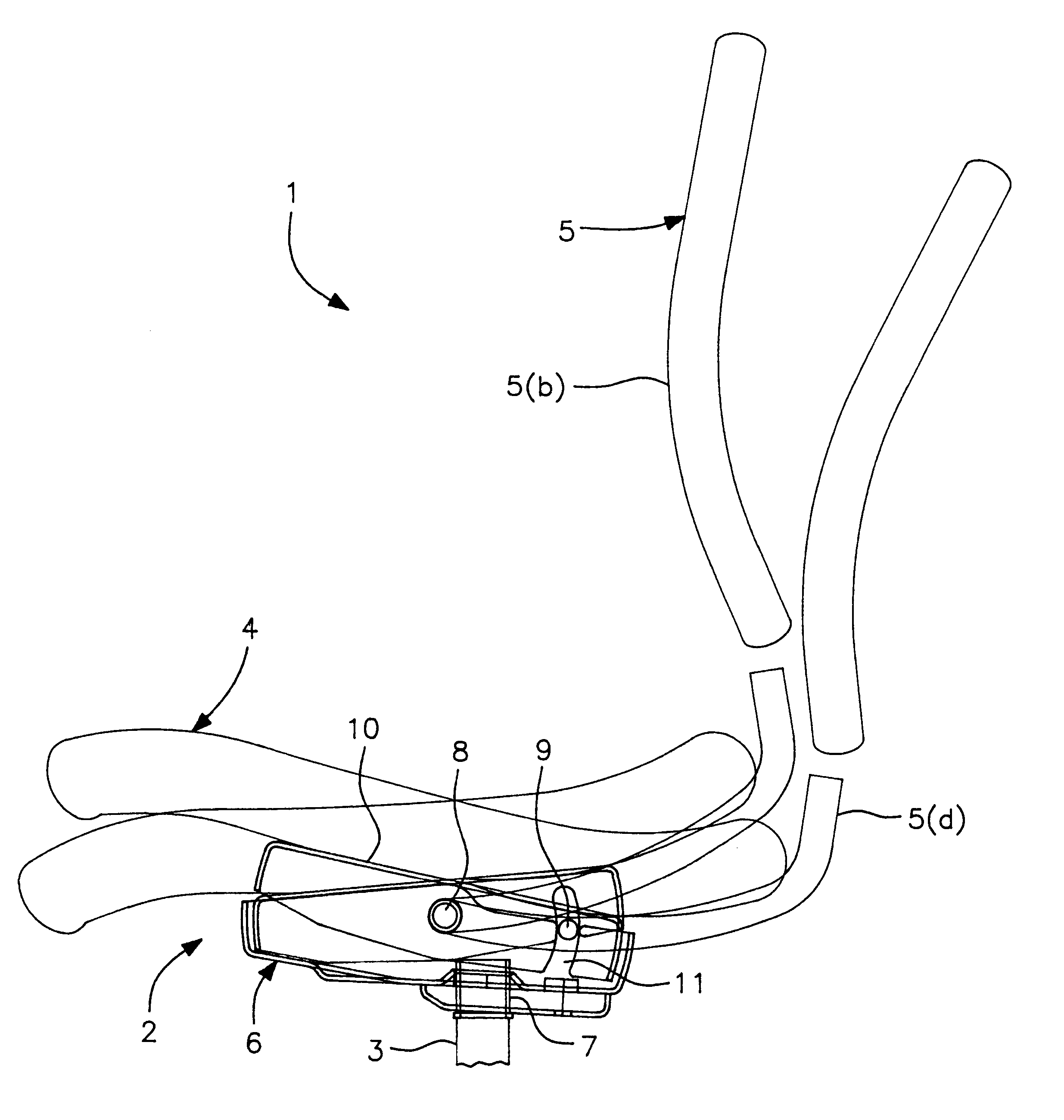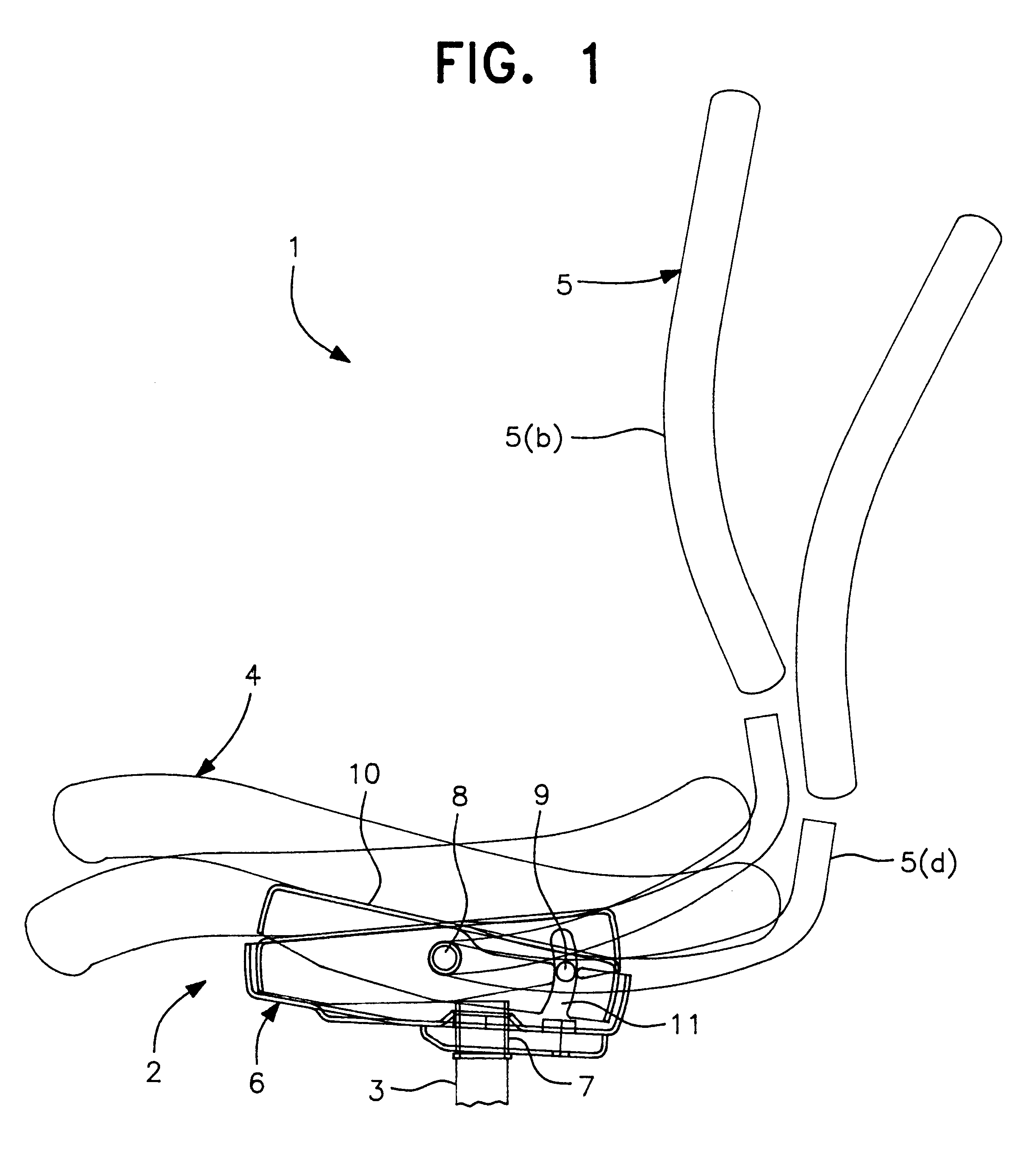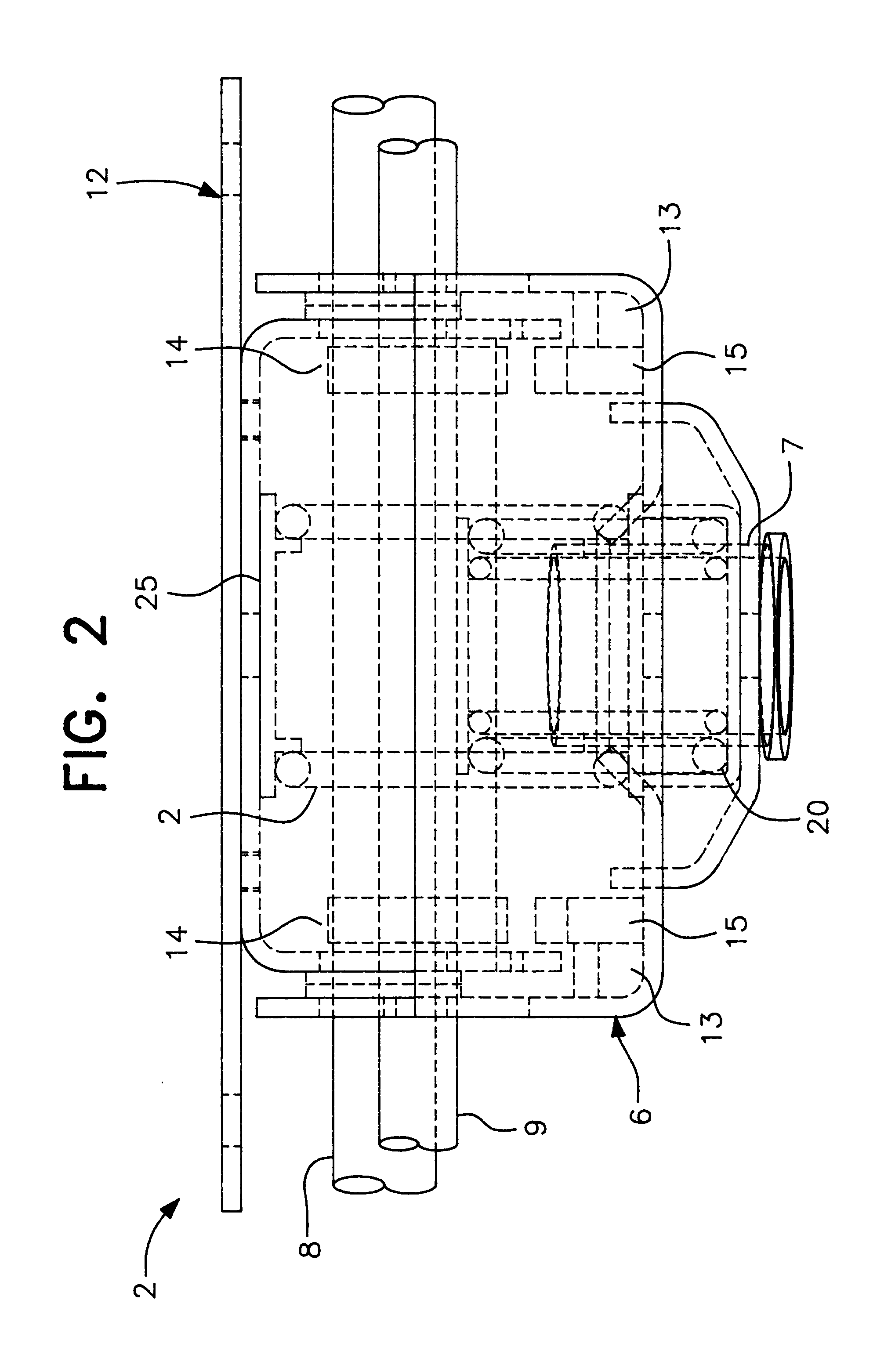Chair
a chair and seat technology, applied in the field of chairs, can solve the problems of prone to repetitive strain injury (rsi), the chair is typically not particularly comfortable and supportive, and the mechanism is relatively complex to manufacture, so as to prevent the seat from tilting
- Summary
- Abstract
- Description
- Claims
- Application Information
AI Technical Summary
Benefits of technology
Problems solved by technology
Method used
Image
Examples
Embodiment Construction
Referring to the drawings, there is shown a chair 1 having a mechanism 2. The chair 1 comprises a pedestal 3, a seat 4, and a backrest 5. The mechanism 2 comprises a fixed support 6 having a socket 7 for receiving the chair pedestal 3.
A pivot pin 8 extends through the fixed support 6. The pivot pin 8 is part of a backrest support of the backrest 5. The backrest support also comprises a cross-bar 9 which extends through the fixed support 6. A pair of laterally spaced-apart arms 5(a) at the sides of the mechanism are interconnected by the pivot pin 8 and the cross bar 9. These arms extend upwardly at the back to support a backrest pad 5(b).
The mechanism 2 also comprises a seat support 10 which rotates about the pivot pin 8. The seat support 10 comprises an arcuate slot 11 through which the cross-bar 9 of the backrest support extends. As shown in FIGS. 2 and 3, the seat support 10 comprises upper lateral fixing brackets 12 connected to a seat pad.
Nylon stops 13 are mounted in the fixed...
PUM
 Login to View More
Login to View More Abstract
Description
Claims
Application Information
 Login to View More
Login to View More - R&D
- Intellectual Property
- Life Sciences
- Materials
- Tech Scout
- Unparalleled Data Quality
- Higher Quality Content
- 60% Fewer Hallucinations
Browse by: Latest US Patents, China's latest patents, Technical Efficacy Thesaurus, Application Domain, Technology Topic, Popular Technical Reports.
© 2025 PatSnap. All rights reserved.Legal|Privacy policy|Modern Slavery Act Transparency Statement|Sitemap|About US| Contact US: help@patsnap.com



